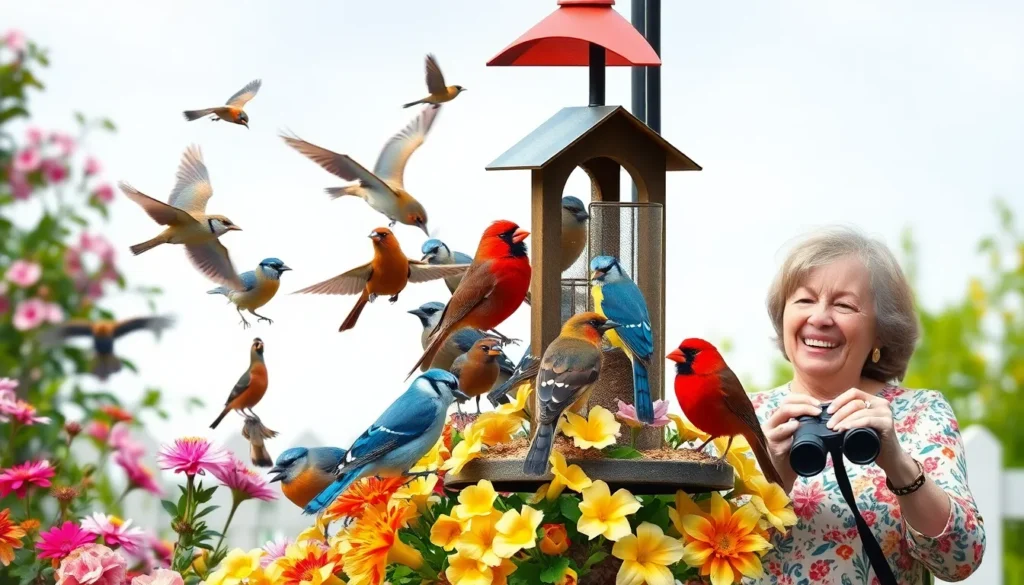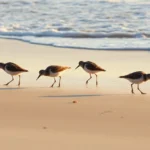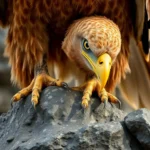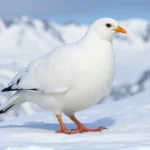We’ve all paused to watch birds in action – whether it’s a robin tugging at a worm or a hawk soaring overhead. These fascinating creatures engage in countless activities throughout their daily lives that reveal remarkable intelligence and survival instincts. From intricate nest-building techniques to complex mating rituals birds demonstrate behaviors that continue to captivate researchers and nature enthusiasts alike.
Understanding bird activities opens up an entirely new industry of backyard wildlife observation. We’re about to explore the most common and extraordinary behaviors you’ll witness in your own outdoor spaces. Whether you’re a seasoned birdwatcher or someone who’s just beginning to notice the feathered visitors in your yard these insights will transform how you view our avian neighbors.
Ready to decode the secret life of birds? Let’s jump into the intriguing area of bird activities that happen right outside your window every single day.
Birdwatching: The Gateway to Bird Activities
Birdwatching serves as the perfect entry point into the intriguing area of avian behaviors. We’ll discover how this accessible hobby opens doors to observing the remarkable bird activities happening right outside our windows.
Essential Equipment for Beginners
Binoculars remain the most crucial tool for any budding birdwatcher. We recommend starting with 8×32 or 8×42 models, which provide clear images without excessive weight during long observation sessions. Entry level options like the Bushnell H2O or Celestron Nature DX offer excellent value under $100.
Field guides help identify species encountered during outdoor adventures. Regional guides such as the Sibley Guide to Birds or Peterson Field Guides focus on local species and include detailed illustrations. Digital apps like Merlin Bird ID provide instant identification through photo recognition and sound matching.
Notebook and pen capture observations that enhance our understanding of bird behaviors over time. Recording details about feeding patterns, territorial disputes, and mating displays creates valuable personal data. Weather conditions, time stamps, and location notes add context to these behavioral observations.
Comfortable clothing supports extended observation periods in various outdoor conditions. Neutral colored garments in browns, greens, or grays help us blend into natural environments without startling wildlife. Layered clothing adapts to changing temperatures during dawn and dusk activity peaks.
Best Times and Locations for Observation
Dawn hours between 6:00 AM and 8:00 AM showcase peak bird activity across most habitats. During these early morning periods, we observe intense feeding behaviors as birds replenish energy reserves after overnight fasting. Territorial singing reaches maximum intensity as males establish boundaries and attract mates.
Evening sessions from 5:00 PM to 7:00 PM reveal different behavioral patterns compared to morning activities. Roosting preparations, family group formations, and final feeding opportunities create unique observation scenarios. Nocturnal species like owls begin their evening calls during these twilight transitions.
Local parks and nature reserves provide concentrated bird populations within accessible locations. Urban green spaces often support 30 to 50 different species throughout the year, including both resident and migratory birds. Water features like ponds, fountains, or streams attract diverse species for drinking and bathing activities.
Backyard feeders create controlled observation environments where we can study exact behaviors up close. Different seed types attract various species, with sunflower seeds drawing cardinals and finches while suet feeders appeal to woodpeckers and nuthatches. Feeder placement near windows allows detailed behavioral observations from indoor comfort.
Identifying Common Bird Species
American Robins display distinctive orange red breasts and serve as excellent starter species for new birdwatchers. These thrush family members exhibit fascinating foraging behaviors, tilting their heads to listen for earthworms underground. During spring months, we observe their nest building activities using mud, grass, and small twigs.
Northern Cardinals showcase brilliant red plumage in males while females display warm brown coloring with reddish tinges. Their thick, cone shaped beaks crack open seeds efficiently during feeding activities. Pair bonding behaviors include males feeding females during courtship rituals, creating memorable observation opportunities.
House Sparrows demonstrate complex social structures through their flock behaviors and territorial interactions. These adaptable birds exhibit dust bathing activities, rolling in dry soil to maintain feather condition. Group feeding creates opportunities to observe dominance hierarchies and communication signals within sparrow communities.
Blue Jays exhibit remarkable intelligence through their problem solving abilities and food caching behaviors. We observe them storing acorns and seeds in various locations, demonstrating spatial memory capabilities. Their alarm calls alert other birds to predator threats, showcasing cooperative behaviors within mixed species flocks.
Bird Photography: Capturing Feathered Beauty
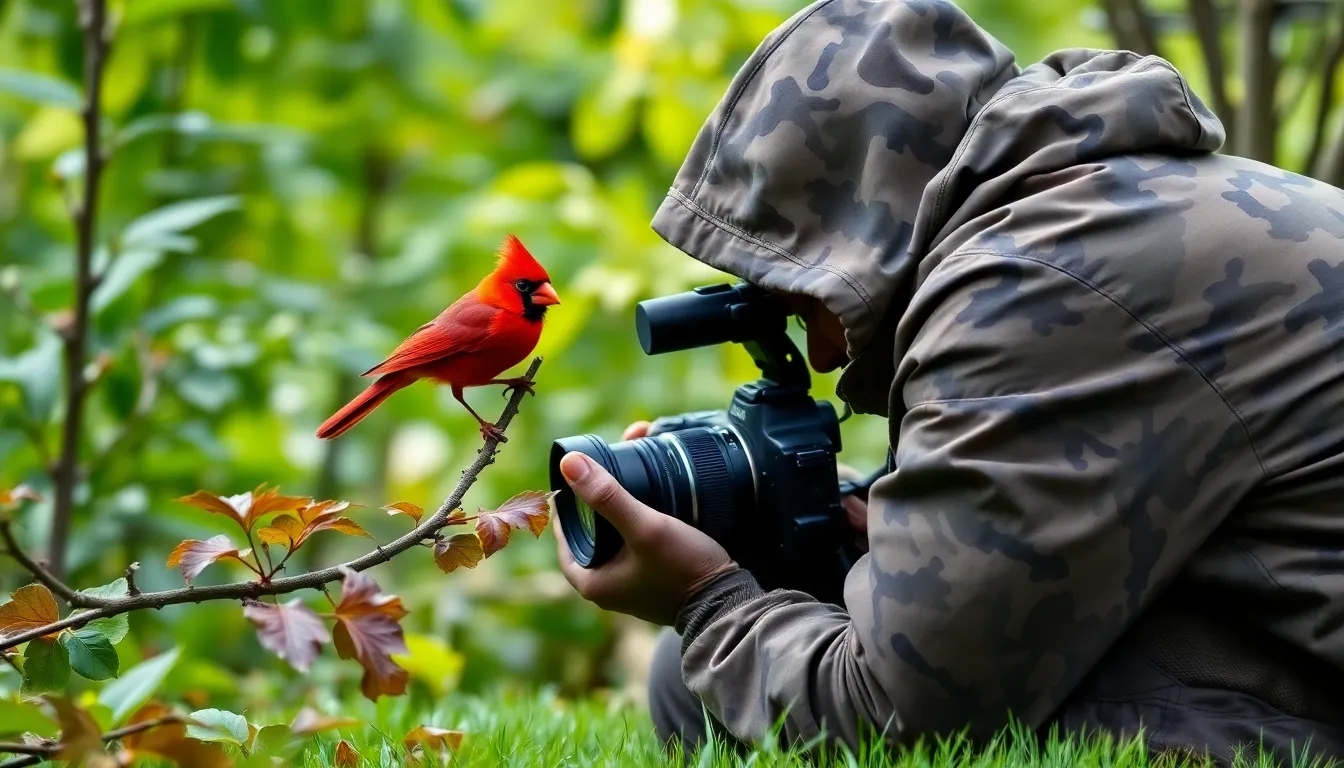
Photographing birds transforms our observation experiences into lasting memories while documenting the incredible behaviors we’ve been exploring. We can preserve those magical moments when a cardinal feeds its young or a robin performs its territorial display.
Camera Settings for Bird Photography
Shutter speed becomes our most critical setting when photographing active birds. We recommend using speeds of 1/1000s or faster for birds in flight and 1/500s minimum for perched subjects that might suddenly move.
Aperture settings between f/5.6 and f/8 provide the sweet spot for sharpness while maintaining enough depth of field. We avoid shooting wide open unless we specifically want to isolate our subject with extreme background blur.
ISO performance varies by camera model but modern DSLRs handle ISO 1600-3200 beautifully for bird photography. We’d rather have a sharp image with slight noise than a blurry photo at lower ISO values.
Autofocus modes like AI Servo (Canon) or AF-C (Nikon) track moving subjects continuously. We set our cameras to single point autofocus for stationary birds and expand to zone focusing for flight shots.
Telephoto Lens Selection and Techniques
Focal length requirements start at 300mm for backyard photography but 400-600mm lenses bring distant subjects closer. We find that 70-200mm lenses work well for larger birds like herons or hawks in open areas.
Image stabilization reduces camera shake significantly when handholding longer lenses. We engage this feature for static shots but turn it off when using tripods to avoid internal vibration conflicts.
Manual focus techniques help when autofocus struggles in low light conditions. We pre-focus on areas where birds frequently land like feeder perches or favorite branches.
Positioning strategies involve getting low to capture birds at eye level rather than shooting down at them. We move slowly and avoid sudden movements that might startle our subjects away.
Ethical Photography Practices
Distance respect means staying far enough away that birds continue their natural behaviors without stress. We never approach nests closer than 15 feet during breeding season to avoid abandonment.
Feeding station ethics require using appropriate seeds and maintaining clean feeders to prevent disease spread. We avoid using recorded bird calls to lure subjects as this can disrupt their communication patterns.
Habitat preservation takes priority over getting the perfect shot every time. We stick to established trails and avoid trampling vegetation or disturbing nesting areas.
Weather considerations include avoiding photography during extreme conditions when birds need to conserve energy for survival. We respect seasonal restrictions at wildlife refuges and breeding colonies.
Bird Feeding: Creating Backyard Sanctuaries
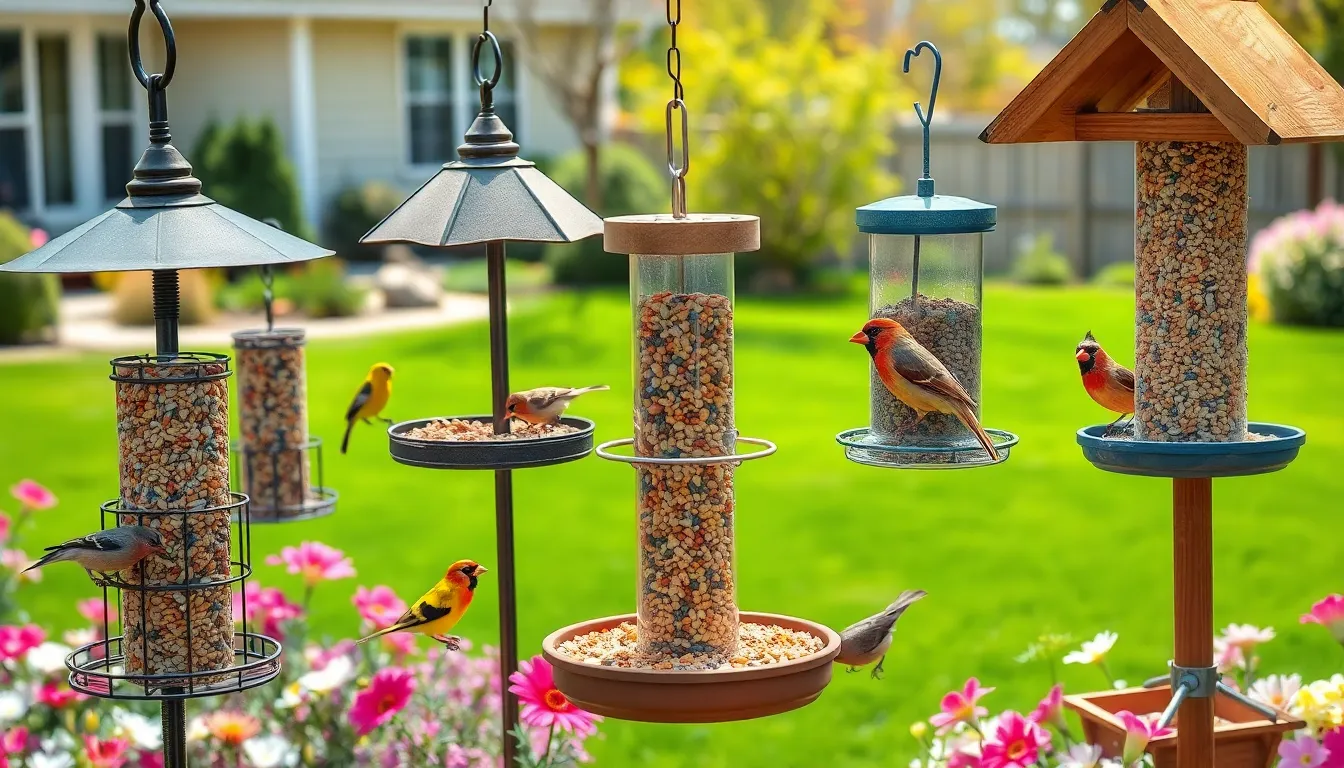
Transforming your outdoor space into a bird feeding sanctuary extends your birdwatching experiences beyond photography and observation. We’ll explore strategic approaches to attract diverse species while supporting local bird populations year-round.
Choosing the Right Bird Feeders
Tube feeders work exceptionally well for small songbirds like goldfinches, chickadees, and nuthatches that prefer nyjer seeds and sunflower hearts. We recommend selecting models with metal construction and drainage holes to prevent seed spoilage during wet weather conditions.
Platform feeders attract ground-feeding species such as cardinals, juncos, and sparrows that feel more comfortable eating from open surfaces. These flat feeding stations should feature raised edges and drainage systems to keep seeds dry and accessible.
Suet feeders provide essential high-energy nutrition for woodpeckers, nuthatches, and wrens during colder months when insects become scarce. We suggest positioning these cage-style feeders on tree trunks or poles where climbing birds can access them easily.
Hummingbird feeders require exact red coloring and nectar ports designed for these tiny birds’ feeding habits. Clean these specialized feeders every few days to prevent harmful fermentation and maintain fresh sugar water answers.
Seed Types That Attract Different Species
Black oil sunflower seeds serve as the most versatile option, attracting cardinals, chickadees, nuthatches, and finches with their high fat content and easy-to-crack shells. We’ve observed these seeds consistently draw the largest variety of backyard birds across different regions.
Nyjer seeds specifically target goldfinches, siskins, and redpolls that possess the specialized beaks needed to extract oil from these tiny black seeds. Store nyjer in dry conditions since moisture quickly spoils these expensive specialty seeds.
Safflower seeds deter squirrels and aggressive birds while attracting cardinals, chickadees, and titmice that appreciate their bitter taste. We find these white seeds particularly useful in areas where pest animals frequently raid traditional bird feeders.
Mixed seed blends often contain filler ingredients like milo and wheat that most birds ignore, creating waste and attracting unwanted pests. Select premium blends with primarily sunflower seeds, peanuts, and tree nuts for better feeding results.
Seasonal Feeding Considerations
Winter feeding becomes crucial when natural food sources disappear under snow and ice, requiring high-fat seeds and suet to help birds maintain body heat. We recommend increasing feeding frequency during extreme cold snaps when birds need additional calories for survival.
Spring migration periods demand consistent food availability as traveling birds seek reliable refueling stations along their journey routes. Clean feeders thoroughly before migration seasons begin to prevent disease transmission among large bird populations.
Summer feeding supports breeding pairs that need protein-rich foods for growing nestlings, making insect-attracting plants and shallow water sources equally important as seed feeders. Reduce feeding during abundant natural food periods to encourage natural foraging behaviors.
Fall preparation involves gradually transitioning from summer nectar feeding to winter seed and suet offerings as hummingbirds migrate and resident birds prepare for colder weather. We suggest monitoring local bird activity patterns to adjust feeding schedules appropriately.
Nest Box Building: Providing Safe Havens

Building nest boxes creates secure breeding environments for birds while offering us front-row seats to observe their fascinating reproductive behaviors.
Species-Exact House Designs
Different bird species require distinct nest box specifications to ensure successful breeding outcomes. Bluebirds thrive in boxes with 1.5-inch entrance holes and interior dimensions of 5x5x8 inches, while chickadees prefer smaller 1.25-inch openings in 4x4x8 inch chambers. House wrens adapt well to 1.125-inch holes in compact 4x4x6 inch spaces.
Woodpeckers demand deeper cavities measuring 6x6x14 inches with 2.5-inch entrance holes to accommodate their natural nesting preferences. Purple martins require apartment-style housing with multiple compartments, each measuring 6x6x6 inches with 2.125-inch entrances.
Owl species need substantially larger accommodations, with screech owls requiring 8x8x14 inch boxes and 3-inch entrance holes. Wood ducks use even more spacious designs measuring 10x10x24 inches with 4-inch oval openings.
Floor drainage holes prevent water accumulation, while ventilation gaps near the roof maintain proper airflow. Rough interior surfaces provide grip for fledglings learning to climb toward the entrance.
Proper Placement and Maintenance
Strategic placement determines nest box success rates and bird safety throughout the breeding season. Height requirements vary significantly by species, with bluebird boxes positioned 4-6 feet high and owl boxes mounted 10-30 feet above ground level.
Entrance orientation should face away from prevailing winds and afternoon sun to protect nestlings from harsh weather conditions. Pole mounting offers superior protection from ground predators compared to tree attachment methods.
Predator guards consisting of metal cones or baffles prevent cats, raccoons, and snakes from accessing nest boxes. Spacing guidelines recommend minimum distances of 100 yards between bluebird boxes to reduce territorial conflicts.
Annual cleaning occurs after breeding season ends, typically in late fall or early winter months. Remove old nesting materials completely and inspect for damage or wear requiring repairs.
Monthly inspections during breeding season help monitor progress without excessive disturbance to nesting birds. Approach boxes quietly and limit viewing time to minimize stress on adult birds and developing young.
Monitoring Nesting Success
Tracking nesting activities provides valuable insights into local bird populations and breeding patterns. Initial observations begin when we notice birds investigating nest boxes through repeated visits and material gathering behaviors.
Egg laying periods typically occur 7-14 days after nest construction completion, with clutch sizes varying from 3-8 eggs depending on species. Incubation duration ranges from 11-14 days for small songbirds to 28-35 days for larger cavity nesters like wood ducks.
Feeding frequency increases dramatically once eggs hatch, with parent birds making 100-1000+ trips per day to satisfy hungry nestlings. Fledgling development progresses over 12-21 days before young birds leave the safety of their nest boxes.
Documentation methods include maintaining detailed logs with dates, species identification, clutch sizes, and success rates. Photography opportunities arise during feeding visits when parent birds focus on their offspring rather than human observers.
Conservation impact becomes measurable through annual breeding success rates and population trends observed across multiple nest box installations. Citizen science programs like NestWatch allow us to contribute valuable data to nationwide bird monitoring efforts.
Citizen Science Projects: Contributing to Bird Research
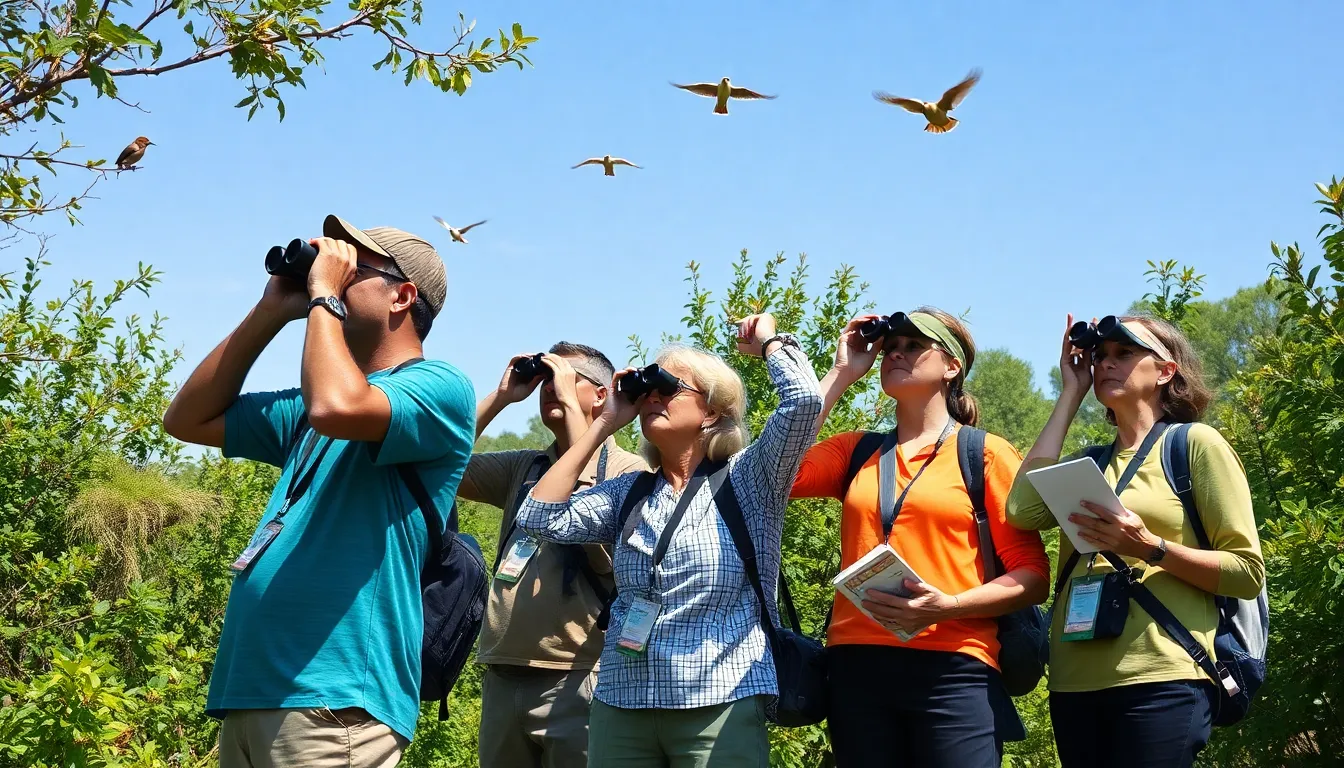
We can extend our bird observation activities beyond personal enjoyment by participating in citizen science projects that support vital bird research initiatives. These collaborative efforts help scientists track population trends and migration patterns across North America.
eBird Data Collection
eBird transforms our daily bird observations into valuable scientific data that researchers use worldwide. We simply create a free account on the Cornell Lab of Ornithology platform and submit checklists documenting the species we observe during each birding session.
Recording includes noting the exact location, date, duration of observation, and number of individual birds seen for each species. Complete checklists provide the most valuable data because they represent all species detected during our birding time rather than just highlighting rare finds.
Monthly submissions help scientists understand seasonal abundance patterns in our local area. Regular participation creates long term datasets that reveal population trends and habitat changes over multiple years.
Mobile apps make data entry convenient during field observations. We can upload photos directly through the app to help verify unusual sightings and contribute to the platform’s photo database.
Christmas Bird Count Participation
Christmas Bird Count represents the longest running citizen science project in the industry, collecting bird population data since 1900. We join thousands of volunteers during the designated count period between December 14 and January 5 each year.
Local Audubon chapters organize count circles within exact geographic boundaries, typically covering a 15 mile diameter area. Teams of experienced birders welcome newcomers and provide guidance throughout the day long counting event.
Count day activities begin before dawn and continue until evening, documenting every bird species and individual encountered within the assigned territory. Participants split into groups covering different habitat types including forests, wetlands, suburban areas, and agricultural lands.
Results contribute to continental scale analysis of winter bird populations and help identify species experiencing important population changes. Our local count data becomes part of a massive database spanning over 120 years of North American bird monitoring.
Breeding Bird Surveys
Breeding Bird Surveys provide critical monitoring data for over 400 bird species across their nesting ranges throughout North America. We can volunteer as observers after demonstrating bird identification skills and familiarity with survey protocols established by the U.S. Geological Survey.
Survey routes follow predetermined paths along secondary roads, covering approximately 25 miles with 50 designated stop points. Each survey begins 30 minutes before sunrise during peak breeding season, typically occurring once annually between late May and early July.
Observers conduct three minute point counts at each stop, recording all birds heard or seen within a quarter mile radius. Consistent timing ensures data comparability across different years and geographic regions.
Training workshops help new volunteers develop the identification skills necessary for accurate species detection and counting. Survey coordinators assign routes based on observer experience levels and geographic proximity to established survey paths.
Results inform federal wildlife management decisions and contribute to the North American Bird Conservation Initiative’s population assessments. Our participation helps scientists identify species requiring conservation attention and track recovery success for previously declining populations.
Bird Migration Tracking: Following Nature’s Journey
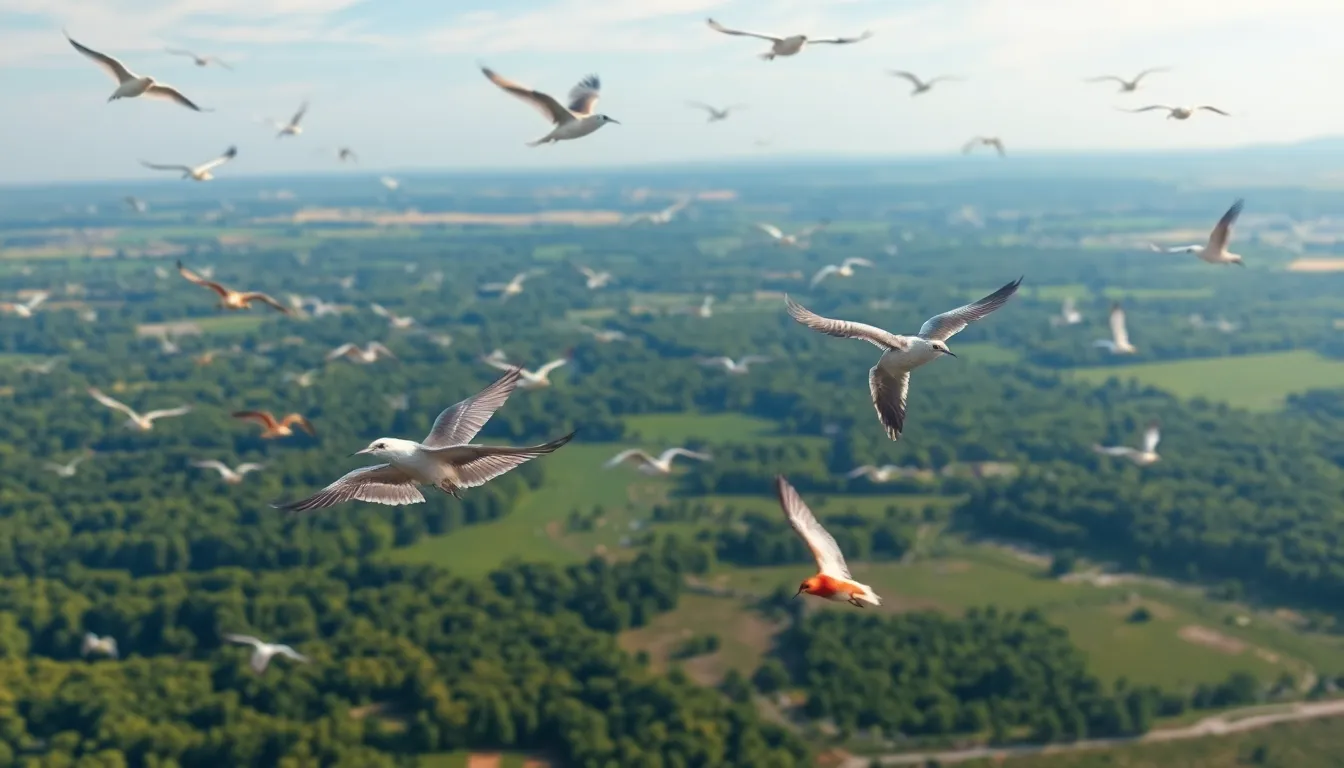
Migration represents one of nature’s most remarkable phenomena, offering us unprecedented opportunities to witness and study avian endurance. We can expand our bird observation skills by learning to track these incredible journeys that span continents.
Understanding Migration Patterns
Migration patterns vary dramatically based on species, geographic location, and seasonal changes. We observe that most North American birds follow four major flyways: the Atlantic, Mississippi, Central, and Pacific routes. These aerial highways connect breeding grounds in northern regions with wintering areas in southern latitudes.
Distance traveled during migration ranges from short regional movements to epic transcontinental journeys. Ruby-throated Hummingbirds cross the Gulf of Mexico in a single 500-mile flight, while Arctic Terns complete the longest migration on Earth at roughly 44,000 miles annually. Timing depends on food availability, weather conditions, and daylight duration changes.
Altitude preferences differ among species during migration flights. Waterfowl like Canada Geese typically fly at 2,000 to 3,000 feet, while Bar-headed Geese can reach altitudes exceeding 29,000 feet when crossing the Himalayas. Weather systems significantly influence these patterns, as birds use thermal updrafts and tailwinds to conserve energy during long-distance travel.
Peak Migration Timing by Region
Spring migration occurs at different times across North America based on latitude and local climate conditions. We track peak activity from February through May, with southern regions experiencing earlier arrivals than northern areas.
| Region | Spring Peak | Fall Peak | Key Species |
|---|---|---|---|
| Gulf Coast | February-March | September-October | Warblers, Vireos, Tanagers |
| Great Lakes | April-May | August-September | Waterfowl, Raptors, Songbirds |
| Northeast | April-May | September-October | Thrushes, Flycatchers, Sparrows |
| Pacific Northwest | March-April | August-September | Shorebirds, Seabirds, Raptors |
Fall migration typically begins earlier and extends longer than spring movements. August marks the start of shorebird migration along coastal areas, while September and October see peak activity for most songbird species. Weather fronts trigger mass migration events, creating spectacular viewing opportunities for observers positioned along major flyways.
Regional variations depend on local geography and habitat availability. Mountain ranges, large bodies of water, and river valleys create concentration points where thousands of birds funnel through exact corridors. These natural features make certain locations premier destinations for migration tracking activities.
Technology Tools for Migration Monitoring
Modern technology has revolutionized our ability to track and study bird migration patterns. We now have access to sophisticated tools that provide real-time data about bird movements across vast distances.
Radar systems operated by the National Weather Service detect bird migration activity and display it on weather maps. These Doppler radar images show migration intensity, direction, and timing, helping us predict peak viewing opportunities in our local areas. Weather radar data becomes particularly valuable during overnight migration periods when visual observation isn’t possible.
Mobile apps like BirdCast provide migration forecasts based on weather conditions and historical data. Cornell Lab of Ornithology’s platform offers three-day migration predictions, showing expected flight intensity across different regions. eBird alerts notify us when rare or unusual species appear in our area during migration periods.
Satellite tracking technology follows individual birds fitted with lightweight transmitters. Scientists attach GPS tags to study exact species’ routes, stopover sites, and timing patterns. This data helps us understand how climate change and habitat loss affect traditional migration pathways.
Citizen science platforms allow us to contribute our own migration observations to large-scale research projects. iNaturalist, eBird, and Journey North collect millions of data points from amateur and professional observers worldwide. Our local observations become part of continental-scale migration monitoring networks that inform conservation decisions.
Audio Recording: Documenting Bird Songs and Calls

Audio recording extends your bird observation experiences beyond visual documentation, capturing the intricate acoustic signatures that make each species unique. We can preserve these fleeting moments of avian communication through modern recording techniques and equipment.
Recording Equipment and Techniques
Digital recorders designed for wildlife capture bird vocalizations with remarkable clarity and precision. We recommend starting with entry-level devices like the Zoom H1n Handy Recorder or Tascam DR-05X, which offer excellent audio quality for beginners. Professional ornithologists often choose the Sound Devices MixPre-3 II for its superior preamp performance and durability in field conditions.
Parabolic microphones enhance your recording capabilities by focusing on distant bird sounds while minimizing background noise. Models like the Telinga Pro-X parabolic collector can capture clear recordings from birds 50-100 feet away. Shotgun microphones provide another excellent option, with the Sennheiser MKE 600 offering professional-grade directional recording at a reasonable price point.
External windscreens become essential accessories when recording outdoors, preventing wind interference that can ruin otherwise perfect recordings. We position ourselves downwind from target birds whenever possible and use natural barriers like trees or rocks to block wind noise. Recording during calm weather conditions typically produces the highest quality results.
Battery backup systems ensure uninterrupted recording sessions during extended field work. Portable power banks with USB outputs can extend recording time for several hours beyond internal battery capacity. Memory cards with fast write speeds prevent audio dropouts during long recording sessions.
Song Identification Resources
Cornell Lab of Ornithology’s Merlin Bird ID app revolutionizes real-time bird song identification through advanced audio recognition technology. We can record unknown bird sounds directly through the app and receive instant species suggestions based on our geographic location and seasonal data. The app’s sound identification feature works with over 400 North American species.
Xeno-canto serves as the industry’s largest collection of bird sound recordings, hosting over 700,000 audio files from ornithologists worldwide. We access this free database to compare our recordings with verified examples from the same species and geographic regions. Each recording includes detailed metadata about location, date, and recording equipment used.
Regional bird guide apps like eBird Mobile provide localized sound libraries exact to your area’s common species. These resources help narrow down identification possibilities by filtering out birds unlikely to occur in your region during exact seasons. State Audubon chapters often maintain curated sound collections featuring local subspecies and regional dialects.
Spectrograms visualize bird sounds as frequency patterns over time, revealing unique acoustic fingerprints for each species. Free software like Audacity displays spectrograms alongside audio waveforms, helping us analyze pitch changes, note duration, and repetition patterns. Professional analysis software such as Raven Pro offers advanced spectrogram analysis tools used by research institutions.
Building Personal Sound Libraries
Systematic organization transforms random recordings into valuable reference collections for future identification and research. We create folder structures organized by species, location, and date to maintain searchable archives of our field recordings. Digital asset management software like Adobe Bridge or free alternatives like DigiKam help catalog large collections efficiently.
Metadata documentation enhances the scientific value of our recordings by preserving essential context information. Each recording should include GPS coordinates, weather conditions, time of day, and behavioral context such as territorial singing or alarm calls. Voice notes recorded immediately after bird encounters capture important details that might be forgotten later.
Backup strategies protect years of recording effort from hardware failures and data corruption. Cloud storage services like Google Drive or Dropbox provide automatic synchronization across multiple devices. External hard drives offer additional protection, with many bird recordists maintaining multiple backup copies in different locations.
Quality control processes ensure our sound libraries contain only the best recordings for reference purposes. We review each recording session and keep only clear, well-recorded examples while deleting files with excessive noise or poor audio quality. Annual library maintenance involves updating file names, checking backup integrity, and organizing seasonal recordings.
Bird Habitat Restoration: Supporting Local Ecosystems

Creating thriving bird habitats extends beyond feeding stations and nest boxes. We can transform our outdoor spaces into flourishing ecosystems that support diverse bird populations throughout their entire lifecycle.
Native Plant Selection for Birds
Native plants form the foundation of successful bird habitat restoration. Local flora provides essential food sources through insects, seeds, and berries that birds have evolved to depend on. Oak trees alone support over 500 species of moths and butterflies, creating abundant feeding opportunities for insectivorous birds like chickadees and nuthatches.
Berry producing shrubs attract frugivorous species during migration seasons. Elderberry, serviceberry, and dogwood varieties offer nutritious fruits that fuel long distance travelers. These plants also provide nesting materials and shelter throughout breeding seasons.
Seed producing wildflowers support finches and sparrows year round. Native sunflowers, coneflowers, and black eyed susans create natural feeding stations that require minimal maintenance. Leaving seed heads standing through winter provides crucial food sources during harsh weather periods.
Layered plantings mimic natural forest structures that different species prefer. Canopy trees like maples and hickories attract woodpeckers and warblers, while understory shrubs support thrushes and towhees. Ground level plants provide foraging areas for sparrows and juncos.
Water Feature Installation
Clean water sources attract more bird species than any other habitat feature. We’ve observed that shallow birdbaths positioned 3 to 4 feet above ground level receive the most activity from songbirds. Water depth should remain between 1 to 2 inches to accommodate various species sizes safely.
Moving water creates audible attraction that draws birds from greater distances. Solar powered fountains and dripper systems produce gentle sounds that signal fresh water availability. These features prevent water stagnation and reduce mosquito breeding compared to static water sources.
Multiple water sources at different heights serve diverse bird communities. Ground level shallow dishes attract ground feeding species like robins and cardinals, while elevated basins serve smaller perching birds. Placing water features near shrub cover provides escape routes from potential predators.
Winter heating elements maintain accessible water during freezing periods. Heated birdbaths and floating de icers ensure continuous water availability when natural sources freeze. These installations often concentrate winter bird activity and create excellent observation opportunities.
Removing Invasive Species
Invasive plant removal creates space for native species to establish naturally. Non native plants like autumn olive and multiflora rose provide limited nutritional value compared to indigenous alternatives. Removing these species allows native plants to expand their territory and support local bird populations more effectively.
Hand pulling smaller invasive plants prevents soil disturbance that chemical treatments cause. Early spring removal targets invasive species before they flower and produce seeds. This timing also minimizes impact on beneficial insects and native plant root systems.
Selective cutting of larger invasive trees preserves established native understory plants. Chain saw removal of Norway maples and tree of heaven creates canopy gaps that encourage native tree regeneration. Immediate treatment of cut stumps prevents regrowth from existing root systems.
Replanting native species immediately after invasive removal prevents erosion and colonization. Fast growing native shrubs like ninebark and spicebush quickly fill vacant spaces. These rapid establishment plants create temporary habitat while slower growing native trees mature.
Urban Birding: Finding Birds in City Environments
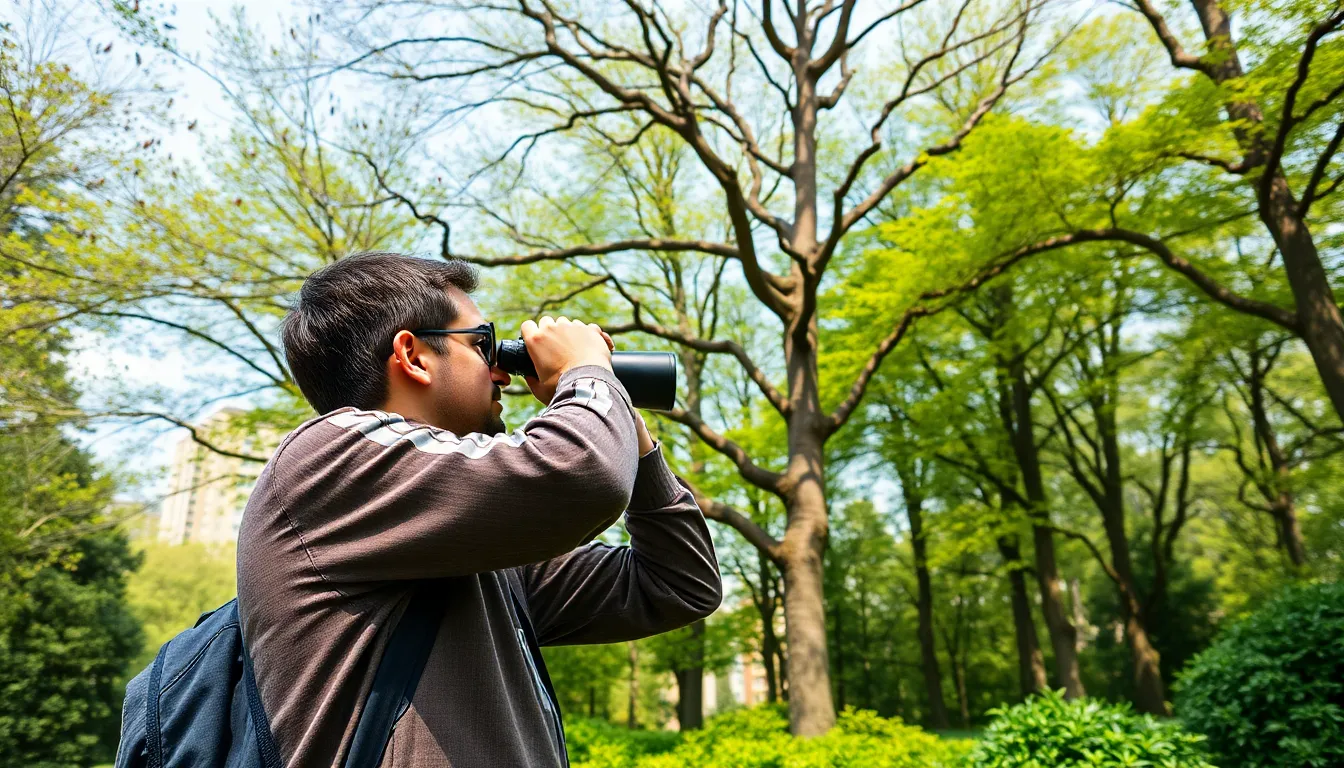
Cities offer surprising opportunities for bird observation, with many species adapting remarkably well to metropolitan environments. Urban landscapes provide diverse microhabitats that support both resident and migratory birds throughout the year.
Best Urban Birding Locations
Parks transform into bird havens within busy city centers, offering green corridors that attract dozens of species during peak migration periods. Central Park in New York hosts over 200 bird species annually, while Golden Gate Park in San Francisco records approximately 150 different species each year. We recommend visiting these locations during early morning hours when bird activity reaches its highest levels.
Waterfront areas provide excellent birding opportunities along rivers, lakes, and harbors throughout urban environments. Chicago’s Lakefront Trail attracts waterfowl like Mallards, Canada Geese, and seasonal visitors including Common Loons during migration periods. These areas typically support 30-40% more bird species than inland urban locations due to diverse aquatic food sources.
Cemetery grounds offer unexpected birding hotspots with mature trees, open spaces, and minimal human disturbance during daylight hours. Mount Auburn Cemetery in Cambridge, Massachusetts, records over 175 bird species annually, making it one of the region’s premier urban birding destinations. We’ve found these locations particularly productive during spring and fall migration seasons.
University campuses create miniature ecosystems with botanical gardens, research facilities, and varied landscaping that supports diverse bird populations. Stanford University’s campus hosts approximately 140 bird species, including resident populations of Western Bluebirds and seasonal appearances of rare vagrant species.
Adapting to City Bird Behavior
Urban birds display modified feeding patterns compared to their rural counterparts, often becoming more opportunistic and less fearful of human presence. House Sparrows in cities feed throughout the day rather than following traditional dawn and dusk patterns, adapting their schedules to match human activity and food availability.
City birds vocalize differently to compete with urban noise pollution, often singing at higher frequencies and during quieter periods. American Robins in metropolitan areas begin their dawn chorus up to 2 hours earlier than rural populations, avoiding peak traffic noise that occurs during traditional singing times.
Nesting behaviors change significantly in urban environments, with many species utilizing human-made structures and materials for construction. House Finches commonly build nests in building crevices, traffic lights, and decorative planters, while incorporating plastic strips, paper scraps, and synthetic fibers into their traditional plant-based materials.
Urban birds show increased boldness levels when foraging and interacting with humans, particularly around food sources like outdoor dining areas and bird feeders. Rock Pigeons and House Sparrows often approach within 3-5 feet of people, while their rural counterparts maintain distances of 15-20 feet or greater.
Rooftop and Park Opportunities
Rooftop gardens attract migrating species during spring and fall seasons, serving as crucial stopover points in urban flyways. These elevated spaces often host warblers, thrushes, and other songbirds that use tall buildings as navigation landmarks during their journeys.
Green roofs provide nesting habitat for ground-dwelling species like Killdeer and various sparrow species that prefer open, sparsely vegetated areas. We’ve documented successful breeding attempts on accessible rooftops with appropriate substrate depths of 4-6 inches and minimal human disturbance.
City parks concentrate bird activity during exact times, with dawn hours producing 60-70% more species sightings than midday periods. Pocket parks smaller than 2 acres can still attract 15-25 regular species, while larger parks exceeding 10 acres typically support 40-60 species throughout the year.
Elevated viewing positions from buildings, parking garages, and observation decks offer unique perspectives for spotting soaring species like hawks, falcons, and migrating raptors. Peregrine Falcons commonly nest on tall urban structures, with over 300 pairs documented in North American cities as of recent surveys.
Storm water management areas including retention ponds, bioswales, and constructed wetlands create valuable habitat for waterfowl, shorebirds, and amphibian-dependent species within urban boundaries. These features can increase local bird diversity by 25-35% compared to traditional landscaping approaches.
Conclusion
We’ve journeyed through the remarkable industry of avian life from backyard observation to cutting-edge conservation science. The activities we’ve explored demonstrate that birds offer endless opportunities for learning engagement and meaningful contribution to wildlife research.
Every observation we make—whether through binoculars camera lens or audio recorder—adds to our understanding of these incredible creatures. From documenting migration patterns to creating thriving habitats we’re not just passive observers but active participants in bird conservation.
The beauty of bird activities lies in their accessibility and depth. Whether we’re setting up our first feeder or contributing data to scientific research each moment spent with birds enriches our connection to the natural industry and supports the species that share our planet.
Frequently Asked Questions
What equipment do I need to start birdwatching?
For beginners, essential equipment includes quality binoculars (8×42 or 10×42 magnification), a field guide or bird identification app like Merlin Bird ID, and a notebook for recording observations. These basic tools will help you identify species and track behaviors effectively.
When is the best time to observe birds?
Dawn and evening hours are peak times for bird activity. Early morning (30 minutes before sunrise to 3 hours after) is especially productive as birds are most active during feeding time. Weather conditions also matter – clear, calm days typically offer better viewing opportunities.
What are the most common backyard bird species?
Common species include American Robins (known for ground foraging), Northern Cardinals (bright red males), House Sparrows (social flock birds), and Blue Jays (intelligent and vocal). Each species displays unique behaviors and feeding preferences that make them interesting to observe.
How do I attract birds to my backyard?
Install different feeder types: tube feeders for small songbirds, platform feeders for ground-feeders, and suet feeders for high-energy nutrition. Use quality seeds like black oil sunflower seeds and nyjer seeds. Provide fresh water sources and maintain clean feeding stations regularly.
What camera settings work best for bird photography?
Use fast shutter speeds (1/500s minimum for perched birds, 1/1000s+ for flying birds), aperture settings of f/5.6 to f/8 for sharp focus, and telephoto lenses (300mm or longer). Manual focus often works better than autofocus for moving subjects.
How can I participate in citizen science bird projects?
Join eBird to submit bird observation checklists, participate in the annual Christmas Bird Count, or contribute to Breeding Bird Surveys. These programs help scientists track population trends, migration patterns, and support conservation efforts through your observations.
What are the major bird migration flyways in North America?
The four major flyways are Atlantic, Mississippi, Central, and Pacific routes. Birds follow these corridors during spring (March-May) and fall (August-October) migrations, traveling thousands of miles between breeding and wintering grounds along predictable pathways.
How do I create better bird habitat in my yard?
Plant native species that provide natural food sources and nesting materials. Install water features like birdbaths or small fountains. Remove invasive plants that don’t support local bird populations. Create layered vegetation with trees, shrubs, and ground cover.
What makes urban areas good for birdwatching?
Cities offer diverse habitats including parks, waterfronts, cemeteries, and green roofs. Many birds adapt well to urban environments, showing modified behaviors like altered feeding patterns. Urban heat islands can also extend growing seasons, providing longer food availability.
How do I record and identify bird sounds?
Use digital recorders with external microphones and windscreens for quality audio capture. Apps like Merlin Bird ID and Xeno-canto help identify songs and calls. Build personal sound libraries by organizing recordings with metadata including date, location, and species information.

